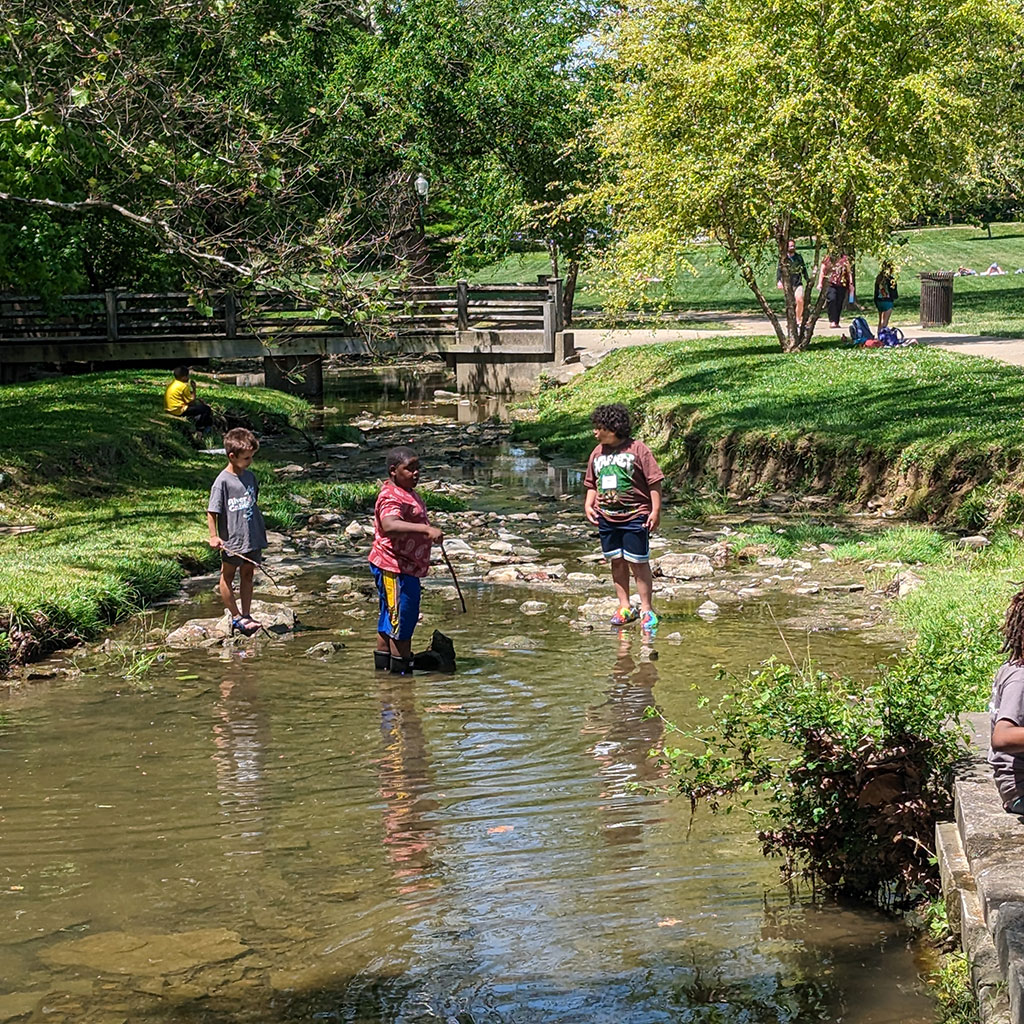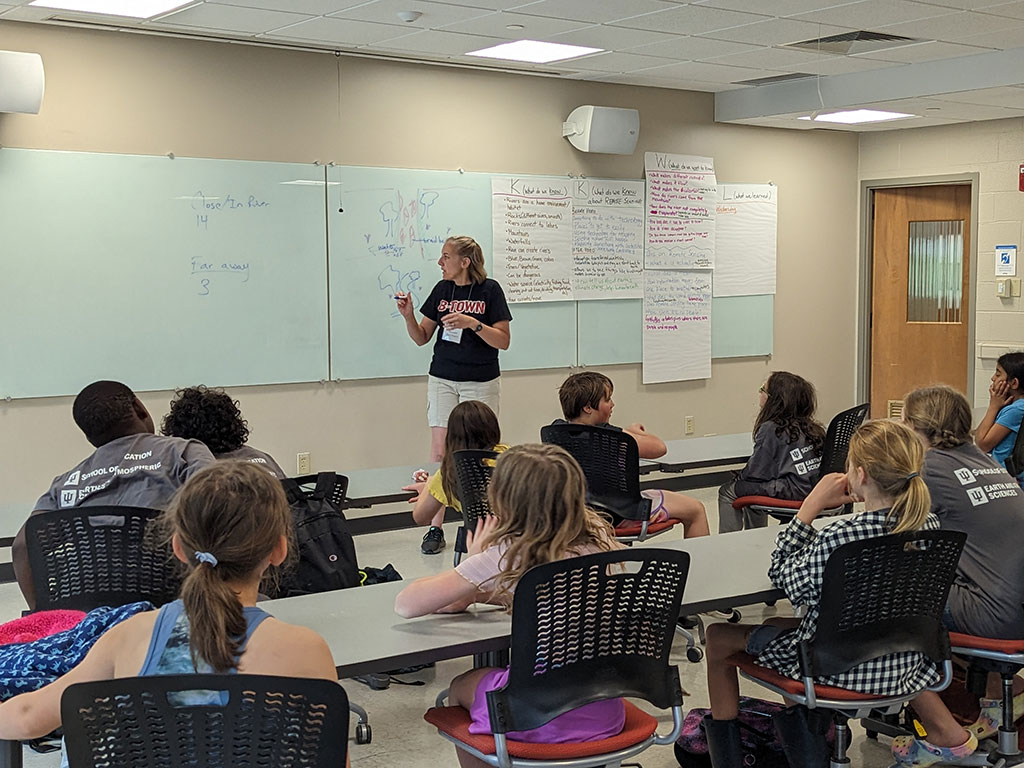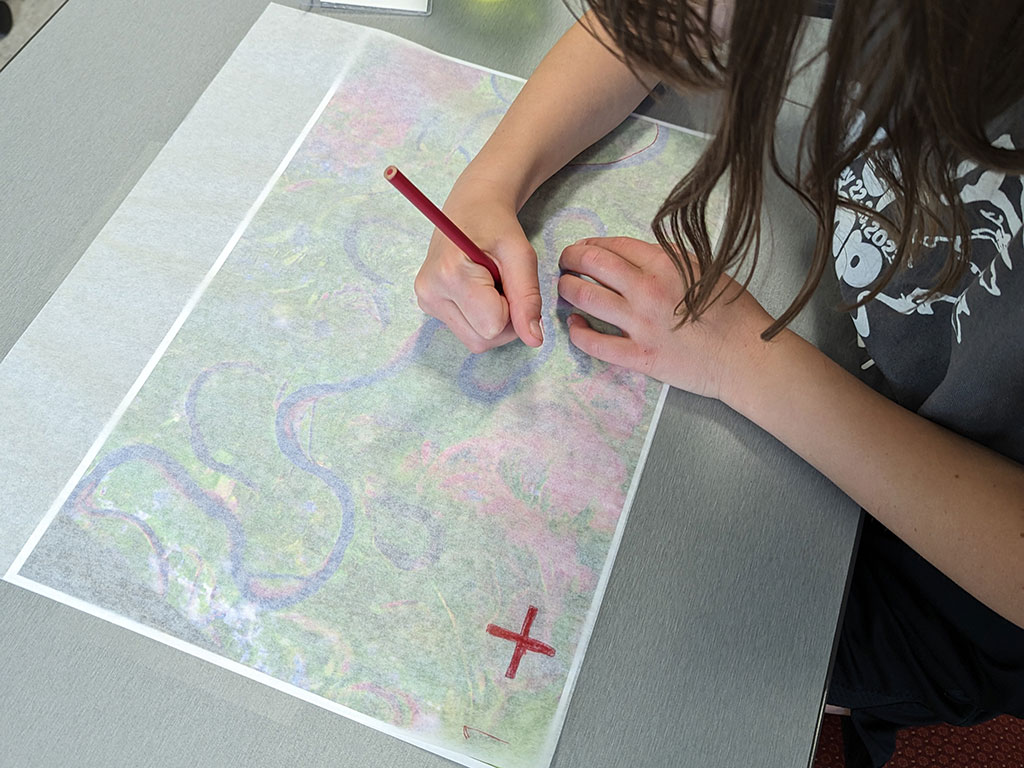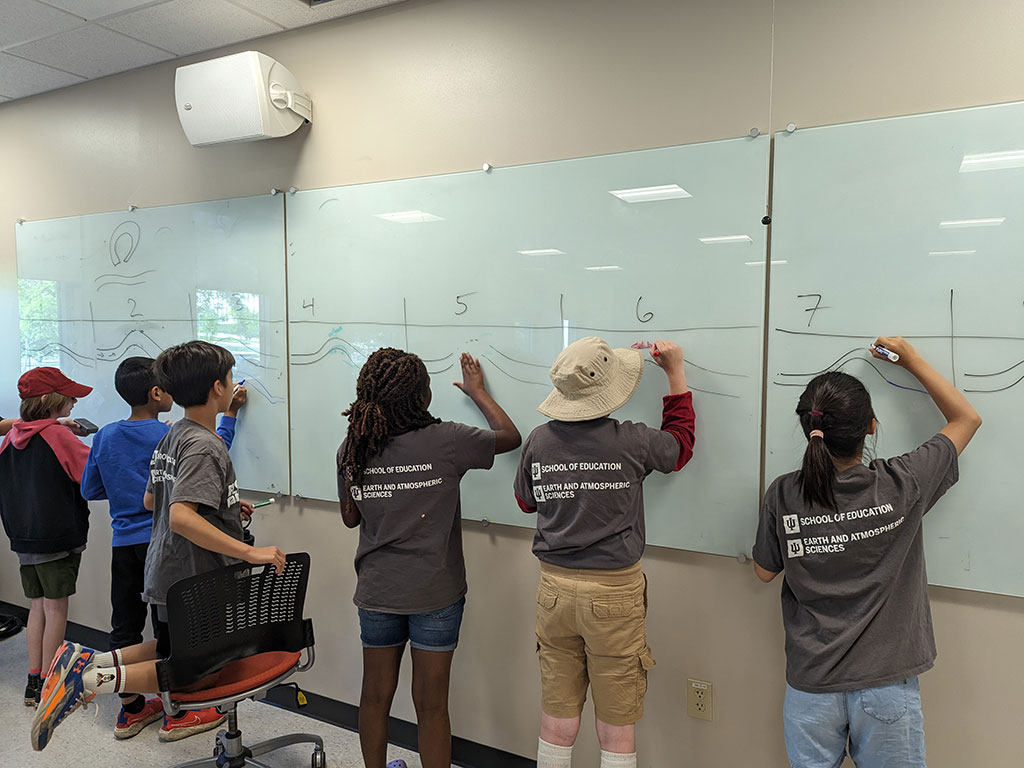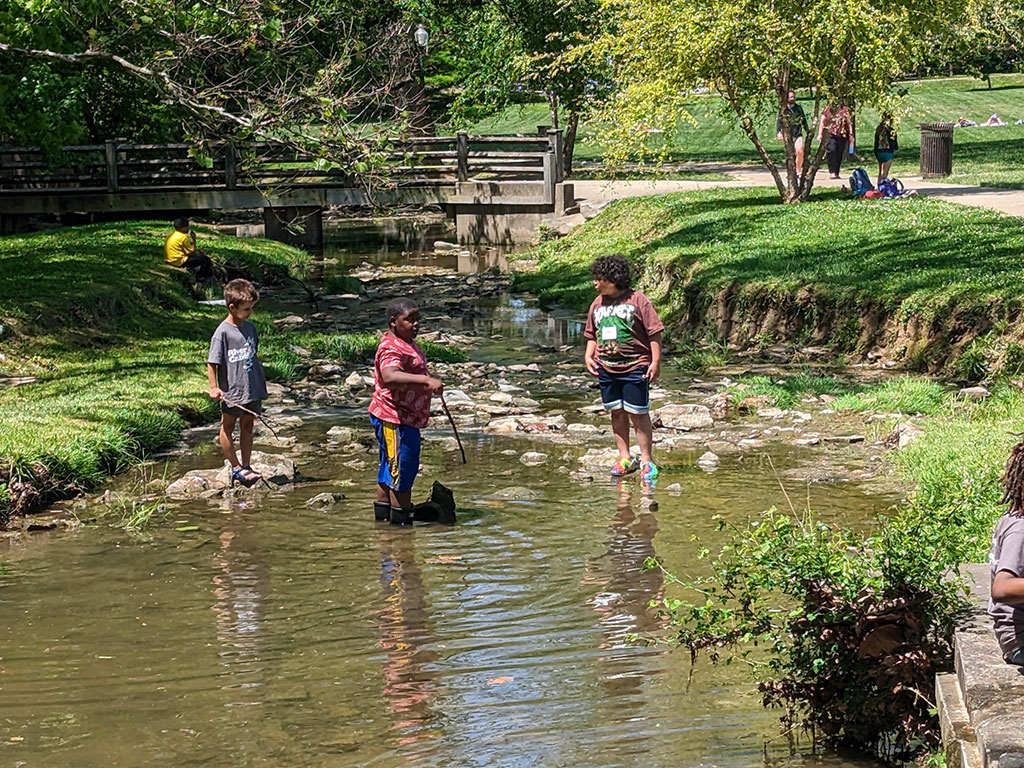Drawing pictures of rivers, collecting muddy sentiment samples and learning about what scientists do: for a week in May, that was the work of 25 elementary students as they participated in River Camp on the IU campus.
The camp brought together faculty, graduate and undergraduate students from both the School of Education and the Department of Earth and Atmospheric Sciences. Doug Edmonds, Associate Professor of Earth and Atmospheric Sciences, reached out to Professor Meredith Park Rogers, wondering if funding from a National Science Foundation grant he had written could have broader impacts through the Saturday Science Quest program at the School of Education.
Along with Edmonds and Park Rogers, two science education Ph.D. students, two doctoral geology students and three elementary pre-service teachers put together a weeks’ worth of lessons for students going into fourth through sixth grade. These lessons included understanding the anatomy of a river and the different parts of it, types of rivers, hydrology and topography, the landscape of rivers and the power of water. The instructors also helped the students understand the role of scientists: how they do their work and the many environments they work in. Beyond the stereotypical “scientist in a white coat and lab” image, participants got to see and gather data themselves - and learn from it.


